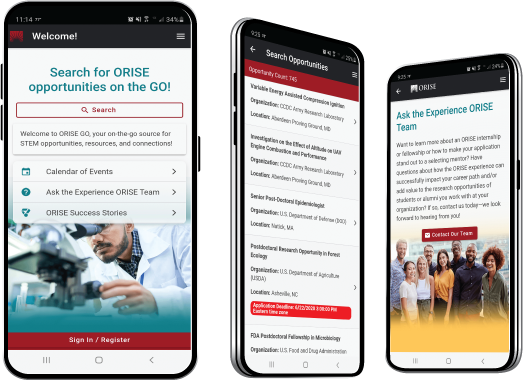Novel Methods for Structural Health Monitoring and Detection of Faults
Create and release your Profile on Zintellect – Postdoctoral applicants must create an account and complete a profile in the on-line application system. Please note: your resume/CV may not exceed 3 pages.
Complete your application – Enter the rest of the information required for the IC Postdoc Program Research Opportunity. The application itself contains detailed instructions for each one of these components: availability, citizenship, transcripts, dissertation abstract, publication and presentation plan, and information about your Research Advisor co-applicant.
Additional information about the IC Postdoctoral Research Fellowship Program is available on the program website located at: https://orise.orau.gov/icpostdoc/index.html.
If you have questions, send an email to ICPostdoc@orau.org. Please include the reference code for this opportunity in your email.
Research Topic Description, including Problem Statement:
The Reinforced Autoclaved Aerated Concrete (RAAC) scandal caused major concerns in public infrastructure in 2023, some of which are ongoing. This highlighted the industry of non-destructively building materials testing in both new and long-standing infrastructure. For concrete, reinforced steel and other building materials, there are well established methods to non-destructively test, including penetration testing, the rebound hammer method and ultrasonic testing.
However, the defense and security want to explore emerging technologies that may be able to detect defects and offer high levels of penetration to building materials such as concrete and steel, for rust, micro material density differentials and other subtle defect detection.
Example Approaches:
The approach to this could be split into multiple routes, through testing a variety of technologies to a variety of building materials focusing on hard to detect defects and material density differentials. Narrowing this down early on will be key to directing the research in the most appropriate manner based on what is available.
Examples of technologies which could be used range from classical to quantum.
- Gravimetry would be a very interesting technique to explore, particularly from the view of understanding the different gravitational properties of different building materials and whether you could also “classify” an unknown material based on its gravitational properties.
- A light array could be used to see how much light passes through the material. Understanding what wavelengths would be optimal for this, which could also be used outside of a laboratory environment whilst meeting safety regulations, would be critical to the exploration of this methodology.
- Concrete is known to have a low-level magnetic field based on how complete the concrete pour is could enable the identification of faults with the concrete.
There may be other approaches than these which we would be very interested to hear about.
Key Words: Non-destructive testing, Quantum, Gravimetry, Magnetometers, Materials, Concrete, Steel, density differentials, Infrastructure, Structural health monitoring
Postdoc Eligibility
- U.S. citizens only
- Ph.D. in a relevant field must be completed before beginning the appointment and within five years of the appointment start date
- Proposal must be associated with an accredited U.S. university, college, or U.S. government laboratory
- Eligible candidates may only receive one award from the IC Postdoctoral Research Fellowship Program
Research Advisor Eligibility
- Must be an employee of an accredited U.S. university, college or U.S. government laboratory
- Are not required to be U.S. citizens
- Citizenship: U.S. Citizen Only
- Degree: Doctoral Degree.
-
Discipline(s):
- Chemistry and Materials Sciences (12 )
- Communications and Graphics Design (3 )
- Computer, Information, and Data Sciences (17 )
- Earth and Geosciences (21 )
- Engineering (27 )
- Environmental and Marine Sciences (14 )
- Life Health and Medical Sciences (45 )
- Mathematics and Statistics (11 )
- Other Non-Science & Engineering (2 )
- Physics (16 )
- Science & Engineering-related (1 )
- Social and Behavioral Sciences (30 )

 ORISE GO
ORISE GO

The ORISE GO mobile app helps you stay engaged, connected and informed during your ORISE experience – from application, to offer, through your appointment and even as an ORISE alum!





